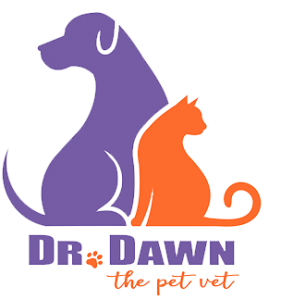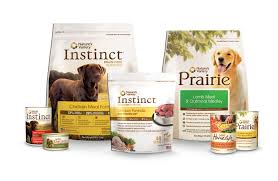Health and nutrition-minded consumers have much interest and demand for natural food products, including natural food for their pets. This is the fastest growing segment of the pet food industry in the US.. Sales increased from $2 billion in 2008 to $3.9 billion in 2012, and was fueled by the 2007 recall of pet food products adulterated with melamine and related derivatives as a result of the inclusion of Chinese-sourced wheat gluten, rice gluten, and corn gluten. This resulted in heightened awareness of pet food safety, and increased demand for traceability of pet food ingredients, and their country of origin.
This growth is also propelled by the unsubstantiated belief of many consumers that diets consisting of meat, whole grains, and fewer by-products offer better nutritional options for their dogs and cats. Recognizable ingredients such as fruits and vegetables on the label leads many to believe that these foods are good for the health and well-being of their pets. Many labels and terms can be misleading, and I thought it best to try to clarify the definition of natural pet food and how to assess its quality.
Natural is often interpreted by consumers to refer to foods containing whole, minimally processed ingredients, as well as foods that do not contain artificial ingredients or additives, including vitamins and minerals. The term natural, though, can have many meanings. The regulatory, or AAFCO, meaning is that it is “…solely derived from plant, animal or mined sources, either in its unprocessed state or having been subject to physical processing… but not having been produced by or subject to a chemically synthetic process and not containing any additives or processing aids except those that might occur unavoidably in good manufacturing practices”. Synthetic nutrients include vitamins and mineral, and are allowed in natural pet foods.
Many consumers also seek to purchase products or ingredients with claims of human-grade, organic, or holistic and avoid filler ingredients. Certain pet owners may avoid wheat products because of gluten (gliadin) intolerance. However, gliadin sensitivity is rare in dogs and usually observed only in Irish Setters.
Fillers : Many carbohydrate sources (eg. digestible carbohydrate and fiber sources such as beet pulp) are often called fillers because of a perceived lack of nutritional benefit and lower cost. However, digestible carbohydrates are often included in formulations as highly digestible and readily available energy sources, and fiber is included to maintain digestive health and fecal quality.
Human-grade: Once ingredients enter the facility they are no longer human-grade and it would not be appropriate to describe the finished pet food or ingredients as human-grade. The FDA standards that initially qualified it as human -grade only apply if the pet food manufacturing facility complies with those standards, which is not required, and thus a misnomer.
Grain-free: For a pet food to not contain grains, it does not mean that it is carbohydrate-free, and may contain carbohydrates in amounts similar to or even higher than those in diets containing grains. In many grain-free diets, ingredients such as potatoes, sweet potatoes, chickpeas, and split peas are used instead of grains.
Food allergies and ancestral diets: The most commonly reported food ingredients associated with food allergies for dogs are beef, dairy, wheat and eggs. For cats, it is beef, dairy, fish and lamb. Again, not gluten.
Consumers may correlate quality and natural products with high-protein or ancestral diets. It is generally accepted that modern dogs evolved from ancient wolf populations, but there is debate about how similar they remain today. There are several important differences between feral wolves and domesticated dogs, and these issues are important when feeding your dogs, because many diets indicate that they are similar and should be feed similarly. Nutritionally it is important, because as domestication progressed, dogs evolved the capacity to thrive on starch-enriched diets, unlike their more carnivorous wolf counterparts. Dogs thus have a more omnivorous metabolism,and should be fed as such.
Cats appear to have retained much of the metabolic and physiologic attributes of true carnivores. Although cats have the capability to digest carbohydrates, high amounts of certain carbohydrates in the diet may exceed digestive capacity and cause digestive disorders, such as diarrhea, flatulence, and bloating. It is suggested that no more than 20-30% of metabolizable energy come from carbohydrates in their diet.
Animal protein sources, and specifically ingredients with the term by-product have contributed to generalized negative perceptions of secondary products. However, many ingredients used by the pet food industry are secondary products of the human food system. Without this relationship, both the human and pet food systems would become unsustainable from economic and environmental standpoints.
The increasing humanization of pets has led to the adoption of human food trends for the natural pet food category, including the perception that the ingredients used in natural pet foods are the same as those used in human foods. This is often just that, a perception.
Plant-based products: Whole grains, including brown rice, oats, and barley, are the predominant grain types included in natural pet foods. Phytonutrients (phytochemicals) are bioactive compounds in plant-based foods that may have beneficial health effects But, there are also some patients that may not benefit from plant based foods. Whole grains may not be beneficial for pets with some medical conditions. For example, dietary phosphorus should be restricted in pets with renal and other urinary tract problems. However, because the phosphorus content is much higher in brown rice than in white rice, the former is actually contraindicated if not part of a balanced commercial pet food. In this situation, a pet owner with a preconceived notion that brown rice is more naturally healthful for their per would be mistaken.
Pet food quality and Safety: A pet food company’s commitment to quality and food safety will be reflected in their quality control procedures. This might include their sanitation, ingredient and product traceability and risk management of contaminants.
There are external standards that must be met by these companies, managed by regulatory bodies and food certification systems. In addition, reputable companies also pay close attention to the quality of raw ingredients, product formulation,processing variables, and preservation to ensure food safety and quality.Most important is the temperature that the meat is processed at, and the duration of time it is cooked. This effects, among other things, the shelf life of the product and the accessible nutrients to your pet.
All in all, many variables go into making a quality food. Veterinarians, and nutritionists, ask key questions, that likely are not what you might be asking, when you are selecting diets. Most important is to not be misled into selecting a diet that you perceive is better because of labeling, that at times, can me misleading.
Dr.Dawn
Please share and subscribe here








